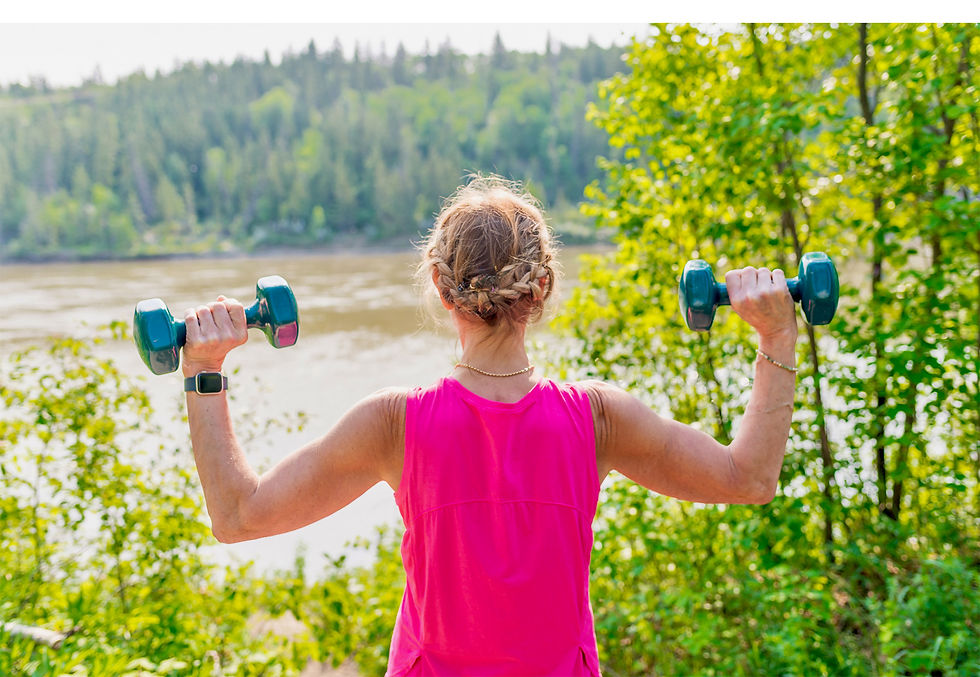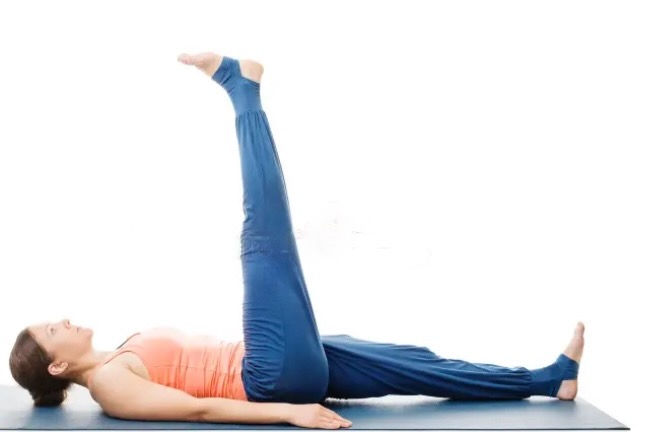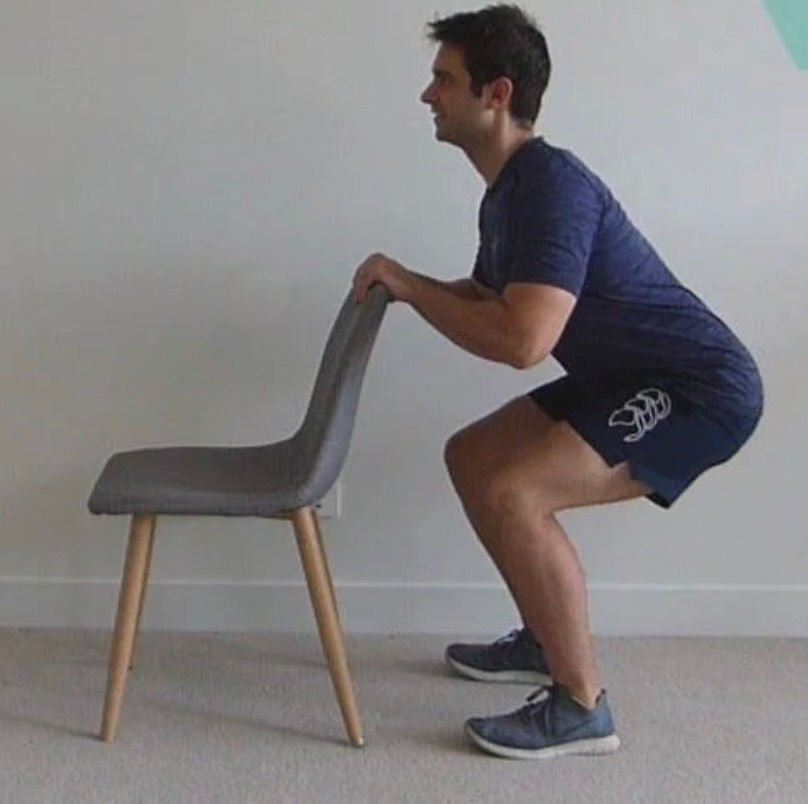Get Strong- Lower Body Strength Exercises for Older Adults
- Diane K
- Jul 30
- 4 min read
Updated: Aug 14

Middle Age Redefined: 50 to 75 is the New Middle Age
Strength Training - Start at the bottom and work up!
Age-related strength loss tends to be increased in the lower limbs compared to the upper limbs. Weakness in the lower limbs also tends to affect more functional daily activities and can increase the risk of falls as we age. So primary attention needs to be given to strengthening muscles in the lower body. For example, a strong lower body will help you
stay balanced
carry groceries
get in and out of a car safely
get up from a chair
walk up and down stairs
These are some key abilities an independent middle aged adult needs to maintain.
Your future self will thank the present-day self who does two sessions of weight training a week, targeting all major muscle groups, starting with the lower body.
Science Backed Strength Training Recommendations- Lower Body
Frequency:
Weight training sessions 2-3 times a week
Intensity: The exercises should be challenging — this is where a personal trainer can be particularly helpful. They can help determine which exercises are most beneficial for your body and set safe limits on intensity. Typically, for a muscle or muscle group, exercises are done 8 to 12 times for 2-3 sets (meaning 8-12 repetitions, 2-3 times).
Type: Primary attention needs to be given to strengthening muscles in the lower body, specifically targeting the glutes, hamstrings, calves, and the front of the legs.
1- Quad over roll
Sit up on the bed with your back supported. Place a rolled towel or cushion under your knee to elevate it approximately 6 inches (15 cm) off the bed. Keep your thigh rested on the towel, and then slowly straighten the knee so the heel lifts. Slowly lower to the start position.

2- Active straight leg raise
The active straight-leg raise is a great exercise to help strengthen hip flexion, core bracing, hamstring flexibility, and hip strength. Start on your back with one leg straight and the other leg bent at a 90-degree angle. Keeping leg completely straight (knee locked out), raise leg as high as you can. Keep your lower back flat to the ground.

3- Reverse lunge
Reverse (or backward) lunges are an excellent way to target your glutes, hamstrings, quads, and calves, resulting in a strong lower body. They’re especially great for beginners and people with knee problems, too.
Stand up straight with your legs hip-width apart and core muscles engaged.
Keep your back straight and your head facing forward with your chin slightly tucked (like you’re holding a ball there) throughout the entire exercise. Keep your knees slightly bent and relaxed, not locked. Reverse lunges work the leg that’s stationary, which will be your front leg. That means you'll be working your right leg when you step backwards with your left, and vice versa.

4- Squats Squats engage multiple muscle groups, including those in the legs, core, and back, which are vital for maintaining balance and coordination. Regular squatting can enhance neuromuscular control, enabling seniors to react more effectively to stumbles and imbalances. Weight-bearing exercises, such as squats, can help increase bone density, thereby reducing the risk of osteoporosis —a common condition in older adults that can lead to fractures. Squats also strengthen the muscles and ligaments surrounding the knees and ankles, providing better support and stability.
This variation uses a chair for support, making it ideal for beginners or those with balance concerns. Sit back and rise using controlled motion, ensuring knees stay aligned with toes. Standing up tall with your feet shoulder-width apart. Toes can face forward or be slightly outwards.
Holding onto your chair with both hands or keeping your arms out straight in front for balance.
Engage your core, hinge (bend) at the hips, and sit back as if you were sitting in a chair.
As you sit back, keep your chest up and your core tight and go no lower than 90 degrees.
As you stand back up, put equal weight through both legs, ensuring your heels remain on the floor throughout.
Make sure your knees stay in line with your toes; they don’t go forward past your toes, and they aren’t moving inward throughout the exercise.
Repeat for the set repetitions.

Leaning against a wall reduces strain on the knees and helps maintain proper posture. Focus on engaging the core and lowering hips to a comfortable depth.
These can then be progressed with added load, such as holding a weighted household object, an added band, or a weight in the gym, such as dumbbells or kettlebells.
5- Calf Raises
Calf raises (heel raises) are the simplest and most effective way to strengthen your calf muscles. There are two calf muscles: the gastrocnemius and the soleus. The gastrocnemius is better activated during the standing calf raise, and the soleus is better activated during the seated calf raise, due to their attachments.
Progression is easily achieved with these exercises by simply adding weight.







Comments